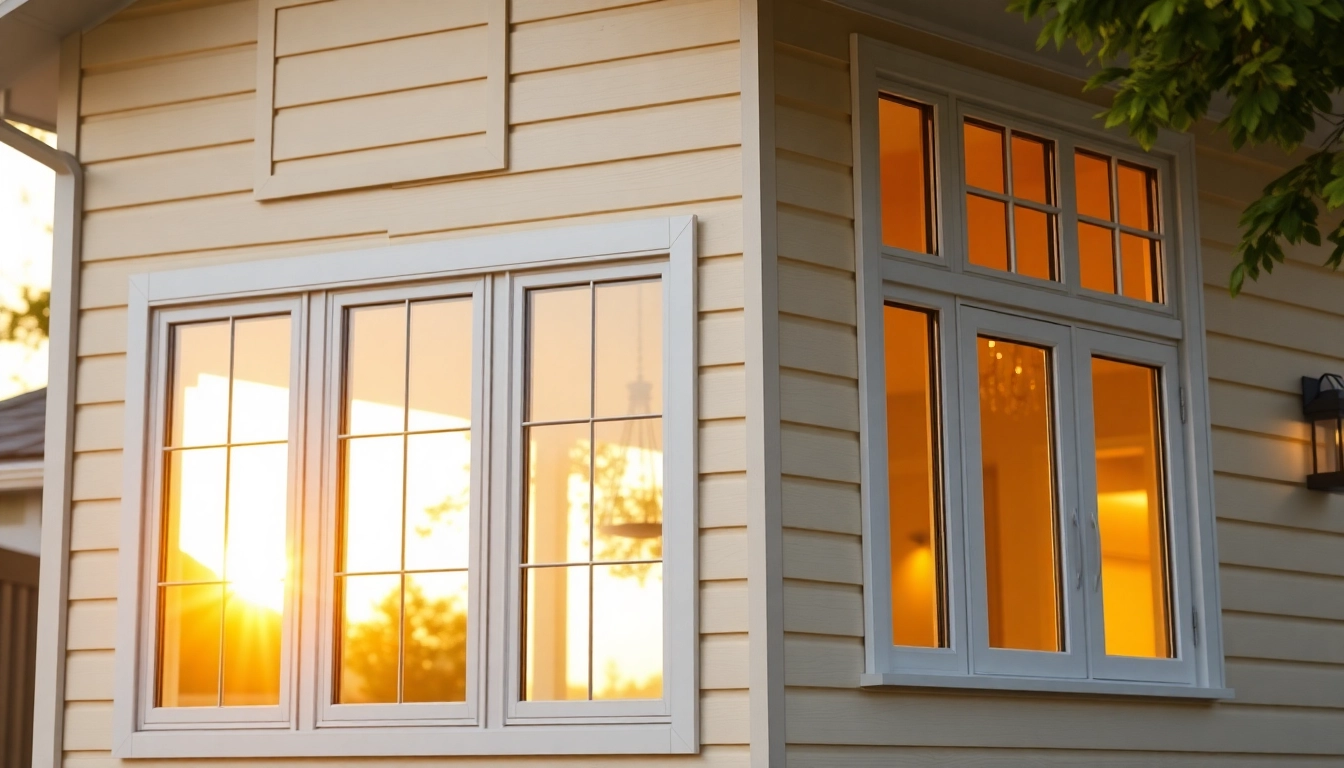Replacement windows are a strategic upgrade that influences comfort, energy bills, and curb appeal. When planning a project, homeowners weigh energy performance, durability, cost, and style to achieve lasting value. For a clear starting point on this topic, explore the concept of Replacement Windows as you assess options, materials, and installers.
What are Replacement Windows?
Definition and scope of Replacement Windows
Replacement windows refer to units that replace existing glazing assemblies—whether by a retrofit approach that preserves the surrounding frame or by a full-frame installation that updates the entire opening. The goal is to eliminate deteriorated sashes, drafts, and moisture intrusion while improving insulation, weathertightness, and aesthetics. Effective replacement considers opening size, frame material compatibility, and the balance between performance and cost.
Key benefits over traditional windows
Replacement windows deliver several tangible advantages:
- Enhanced energy performance through better insulation and low-E coatings.
- Improved comfort with fewer cold drafts and more stable interior temperatures.
- Lower maintenance due to modern materials and improved sealing.
- Updated aesthetics that boost curb appeal and potential resale value.
Common myths and misconceptions
Common beliefs—such as replacement windows always require full-frame installation, or that all options are priced identically—can mislead decisions. In reality, retrofit and full-frame approaches suit different homes, and choice of material, glazing, and hardware drives cost and performance. A careful assessment of roofline, framing rot, and interior trim can prevent surprises after installation.
Planning Your Replacement Windows Project
Budgeting for Replacement Windows
Budgeting should reflect scope (retrofit vs full-frame), material choice, glazing, and labor. Regional cost ranges vary, with per-window pricing influenced by size, style, and energy performance. Plan for contingencies such as frame repair, extended warranties, and potential specialty finishes to avoid scope creep at the end of the project.
Styles and materials selection for Replacement Windows
Common frame materials include vinyl, wood, fiberglass, and aluminum-clad options. Each offers trade-offs in durability, maintenance, and appearance. For example, vinyl typically provides strong value and low maintenance, while wood offers classic aesthetics when properly treated and finished. Glazing choices (double vs. triple) and coatings (Low-E, argon/krypton gas fills) significantly influence long-term energy performance.
Timeline, permits, and HOA considerations
Typical timelines hinge on project scope and product lead times. Permits may be required for significant structural work or full-frame replacements, and homeowners associations can specify style or color guidelines. Early coordination with contractors helps align material delivery, scheduling, and any permitting processes to minimize delays.
Materials, Styles, and Features for Replacement Windows
Vinyl vs Wood Frames for Replacement Windows
Vinyl frames are popular for their affordability, moisture resistance, and low maintenance, making them well suited for moist climates and busy households. Wood frames offer warmth and classic detail but demand regular finishing and protection against weather. Hybrid designs blend benefits of both materials, striving for durability with refined aesthetics.
Glazing options and energy performance
Glazing choices determine warmth, light, and glare control. Double-pane with low-E coatings remains a standard for energy savings, while triple glazing can further reduce heat transfer in extreme climates. Gas fills (argon or krypton) between panes reduce heat transfer and improve insulation, contributing to more comfortable living spaces and potential energy bill reductions.
Hardware, grilles, and design options
Hardware finishes (nickel, brass, matte black) and grille patterns (grid configurations, simulated divided light) influence the overall look. Contemporary designs favor clean lines and larger glass areas, while traditional styles emphasize divided lights and ornate details. Matching hardware with interior trim can unify the room’s aesthetic and enhance resale appeal.
Installation Process and Quality Assurance for Replacement Windows
Pre-installation steps and measurements
Accurate measurements and site evaluations are critical. Inspect openings for rot, settling, or hidden moisture, and verify plumbness, level, and square before ordering. Document existing conditions, confirm interior trim compatibility, and discuss any required adjustments to framing or flashing to ensure a leak-free installation.
Installation best practices and quality control
Quality installation follows best practices: secure nailing fins or flange mounting, proper flashing to shed water, careful caulking, and correct shimming to align the window. A well-executed install minimizes air leaks and maximizes operating efficiency, with attention to interior and exterior finishes to preserve aesthetics and durability.
Post-install inspections and warranties
Post-install checks confirm sash operation, seal integrity, and drainage performance. Warranties typically cover frame and glass for a span of years, with separate provisions for labor. Understand what is included in warranty coverage, how to make claims, and the process for service visits to maintain peace of mind over time.
Measuring Success with Replacement Windows Performance, ROI, and Maintenance
Energy savings and comfort
Well chosen replacement windows reduce heat loss, minimize drafts, and stabilize interior temperatures. Track energy bills before and after installation, and consider comfort metrics such as fewer cold spots and consistent humidity levels. A comfortable home often correlates with improved occupant well-being and productivity.
Impact on home value and resale
Replacement windows can positively influence home value, especially in markets where energy efficiency and curb appeal weigh heavily in buyer decisions. The ROI varies by home style, neighborhood, and the quality of the installation, but well-executed upgrades generally contribute to marketability and perceived value.
Maintenance, care, and longevity
Maintenance expectations depend on frame material and exposure, but routine cleaning, seal checks, and prompt repair of damaged components extend lifespan. Regular inspections to catch seal failures or moisture intrusion early help maintain performance and avoid costly repairs later on.
